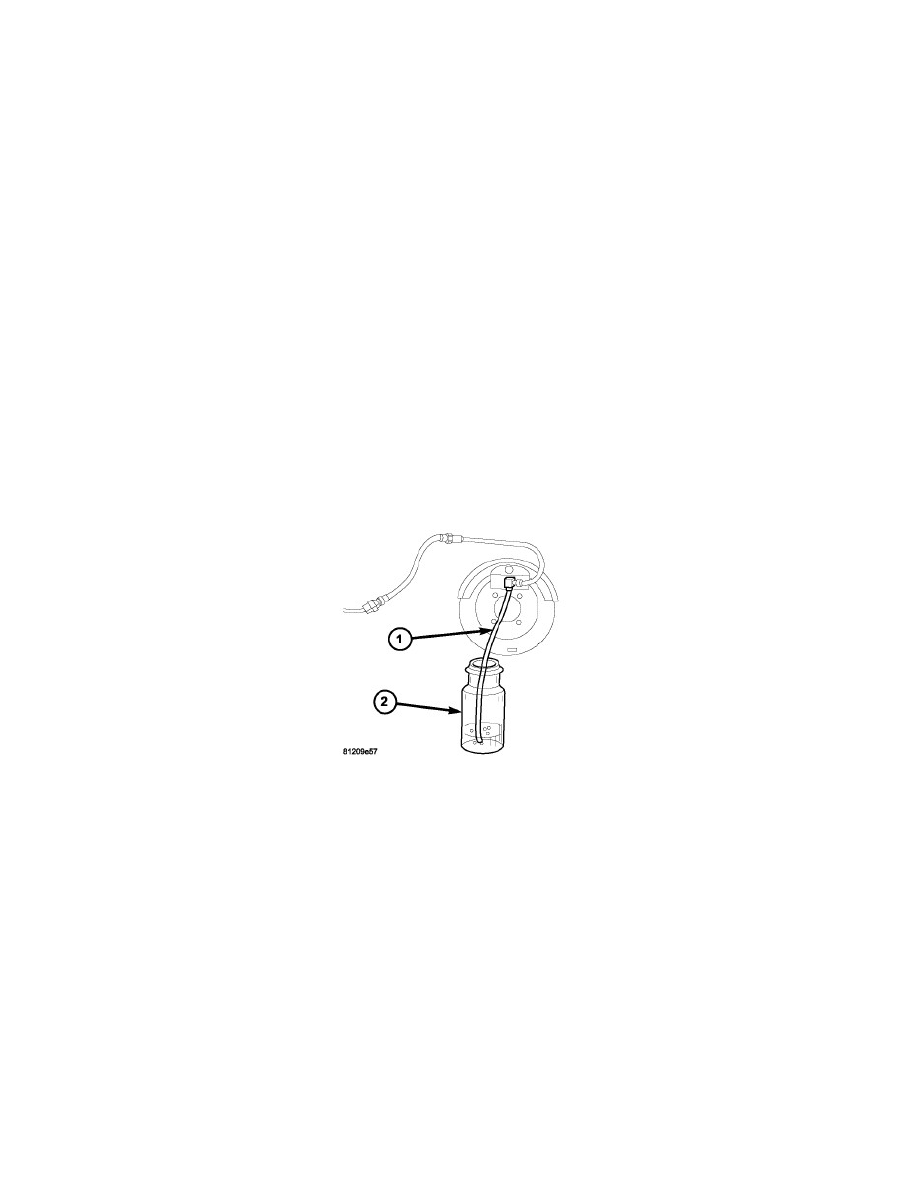Journey FWD V6-3.5L (2009)

Brake Bleeding: Service and Repair
Base Brake Bleeding
BASE BRAKE BLEEDING
NOTE: This bleeding procedure is only for the vehicle's base brakes hydraulic system. For bleeding the antilock brakes hydraulic system, See:
CAUTION: Before removing the master cylinder reservoir cap, thoroughly clean the cap and master cylinder fluid reservoir to prevent dirt
and other foreign matter from dropping into the master cylinder fluid reservoir.
NOTE: The following wheel sequence should be used when bleeding the brake hydraulic system. The use of this wheel sequence will ensure
adequate removal of all trapped air from the brake hydraulic system.
-
Left Rear Wheel
-
Right Front Wheel
-
Right Rear Wheel
-
Left Front Wheel
NOTE: When bleeding the brake system, some air may be trapped in the brake lines far upstream, as much as ten feet from the bleeder screw.
Therefore, it is essential to have a fast flow of a large volume of brake fluid when bleeding the brakes to ensure all the air gets out.
Pressure bleeding the brakes is recommended, although the brakes may be manually bled or pressure bled. Refer to the appropriate following procedure.
PRESSURE BLEEDING PROCEDURE
Follow the pressure bleeder manufacturer's instructions for use of the pressure bleeding equipment.
1. Install Master Cylinder Pressure Bleed Cap, Special Tool 6921, or equivalent on the master cylinder fluid reservoir. Attach the fluid hose from the
pressure bleeder to the fitting on Special Tool 6921.
2. Attach a clear plastic hose (1) to the bleeder screw and feed the hose into a clear jar (2) containing enough fresh brake fluid to submerge the end of
the hose.
3. Open the bleeder screw at least one full turn or more to obtain a steady stream of brake fluid.
4. After approximately 120-240 ml (4-8 ounces) of fluid have been bled through the brake circuit and an air-free flow is maintained in the clear
plastic hose and jar, close the bleeder screw.
5. Repeat this procedure at all the remaining bleeder screws.
6. Check and adjust brake fluid level to the FULL mark on the reservoir.
7. Check brake pedal travel and feel. If pedal travel is excessive or if the pedal feels excessively spongy, some air may still be trapped in the system.
Re-bleed the brakes as necessary including the IPB Caliper Brake Bleeding Procedure on the rear calipers as listed below.
8. Test drive the vehicle to verify the brakes are operating properly and pedal feel is correct.
MANUAL BLEEDING PROCEDURE
NOTE: To bleed the brakes manually, the aid of a helper will be required.
